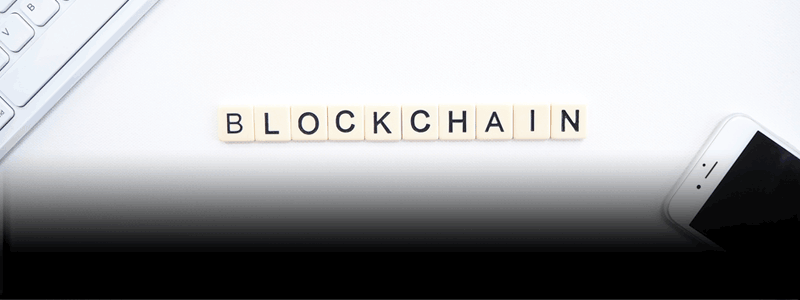xSuite Blog
Expert Knowledge on Digitalization & Automation of Business Processes

xSuite Blog
Expert Knowledge on Digitalization & Automation of Business Processes
Blockchain for P2P Processes?
Topic: GDPR | Blockchain | AP Automation | Digitalization

Since its peak in 2017, the hype surrounding bitcoin has heightened interest in blockchain, the technology behind the cryptocurrency. Numerous academic articles and studies on blockchain have been published over the last few years, and in late 2019, the state of Bavaria decided to promote this technology by establishing the Bavarian Center for BlockChain, or [bc]2. In the light of these developments, we would like to examine whether blockchain technology might be deployed to improve procure-to-pay processes.
Defining “blockchain” and identifying its advantages
The term “blockchain” has been widely discussed, and various definitions have emerged. Furthermore, there is no one single blockchain; instead, the technology comes in a range of forms. Before we examine the potential benefits of blockchain technology for operational financial processes, it is important to clarify our definition of the term:
A blockchain is a list of records located on separate computers. The records are linked together, as each record contains the hash of the prior record. Thanks to these links and the numerous distributed versions of blockchain, it is practically impossible to retroactively alter individual records without this being noticed.
Blockchain technology is therefore extremely secure, offering protection both from external attacks (e.g. by hackers) and from attempts by individual participants to manipulate data. This in turn means that blockchain offers all sides a high degree of transparency and traceability.
In addition, information sharing is quicker via blockchain—at least when compared to manual, paper-based processes. By protecting data from manipulation, blockchain can render additional control measures unnecessary, thereby reducing costs.
The disadvantages and drawbacks of blockchain
All records are stored on all the computers participating in this blockchain, and these records are never deleted. As a result, the total storage requirements for blockchain tend to grow rapidly, as do the associated costs.
The longer the blockchain, the slower it becomes when the records have to be checked aligned online. In this regard, blockchain performs considerably worse than a central database.
Another issue widely discussed in relation to blockchain is its conformity with the EU’s General Data Protection Regulation (GDPR). A core element of blockchain is that its data cannot be altered. However, the GDPR stipulates that it must be possible to both modify and delete personal data. It is essential to bear this in mind before deploying blockchain.
Effective applications of blockchain technology
The above examination of the advantages and disadvantages reveals which applications blockchain is suitable for.
Blockchain excels when it comes to protecting data from manipulation. It is therefore especially useful when several parties or actors are involved in a process and they do not fully trust each other, for example because they do not know each other, the process comprises multiple stages, and there are opportunities and incentives to manipulate the process.
Applications that could be considered for blockchain include logistics and (international) trade. Blockchain technology can be used to fully and securely document supply chains, allowing the origin and authenticity of products to be verified beyond doubt. This could enable companies to curb product piracy and prevent illegal trade. In addition, the complete documentation offered by blockchain allows companies not just to track the sources of raw materials, but also to document output. This could be important for manufacturers that need to issue a product recall. Blockchain enables manufacturers to identify which batches made their way to which end customers, and via which distribution channels.
Not a good application: internal procure-to-pay processes
The scenarios outlined above are typical examples of the effective use of blockchain technology. They involve multiple actors who do not know each other; there are incentives and opportunities to manipulate data; and there is a lack of trust between the actors.
As a rule, internal processes in procurement and invoice processing do not fulfill these criteria. Several people may be involved in these processes, including purchasers, accountants, auditors, authorizers and cost center managers. In most cases, however, lack of trust between these employees is not an issue, and it is unlikely that they would have reasons to want to manipulate the data.
It is certainly technologically possible to use blockchain technology for internal procure-to-pay processes. But using blockchain for this application would be like using a sledgehammer to crack a nut, as the saying goes. It could also be seen as evidence of a lack of trust in employees. Digital workflow systems are perfectly suitable for documenting processes while maintaining transparency and traceability.
Topic
- AP Automation (28)
- Digitalization (28)
- SAP (18)
- Cloud (15)
- S/4HANA (10)
- E-Invoicing (9)
- Skills Shortage (6)
- Supplier Portal (6)
- AI and Machine Learning (5)
- Procurement (5)
- Invoice (5)
- GDPR (4)
- Software Development and Implementation (4)
- xSuite Group (4)
- Archiving (3)
- Usability and User Experience (3)
- RPA (2)
- Dynamic Discounting (1)
- Blockchain (1)
- Incoming Mail (1)


